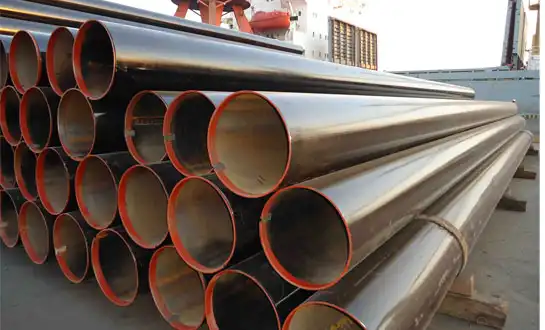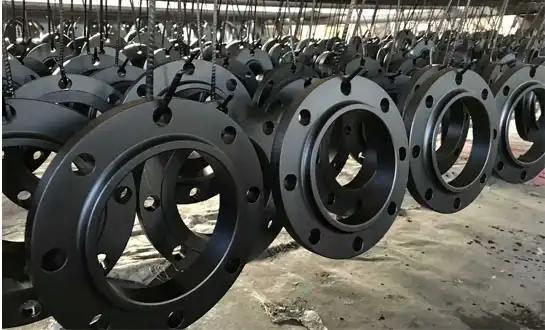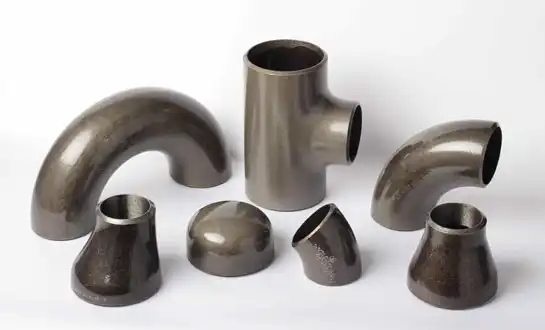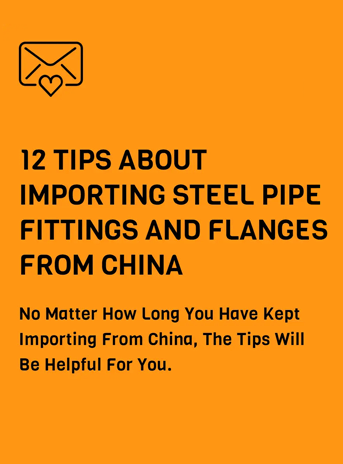Best Steel Pipe Fittings for High-Temperature Applications Reviewed
High-temperature industrial environments demand steel pipe fittings engineered to maintain structural integrity, dimensional stability, and leak-tight performance under extreme thermal conditions that would compromise standard materials. To choose the right fittings for steam systems, refinery operations, power generation, and chemical manufacture, you need to know how materials work, how to design them, and how they operate at high temperatures. This thorough evaluation looks at the finest steel pipe fittings for use at high temperatures. The finest steel pipe fittings for high-temperature use are made from high-quality materials and are made with great care to ensure they work well at temperatures over 400°C. Alloy steel grades, including chromium-molybdenum compositions, demonstrate exceptional creep resistance and oxidation stability, while austenitic stainless steel fittings offer corrosion protection and strength retention in both high-temperature and chemically aggressive conditions. Carbon steel pipe fittings are a cheap way to connect pipes that work at temperatures up to 500°C. Engineers may choose steel pipe fittings that combine performance with cost while making sure they will last for a long time by taking into account the temperature ranges, pressure requirements, and thermal cycling patterns.
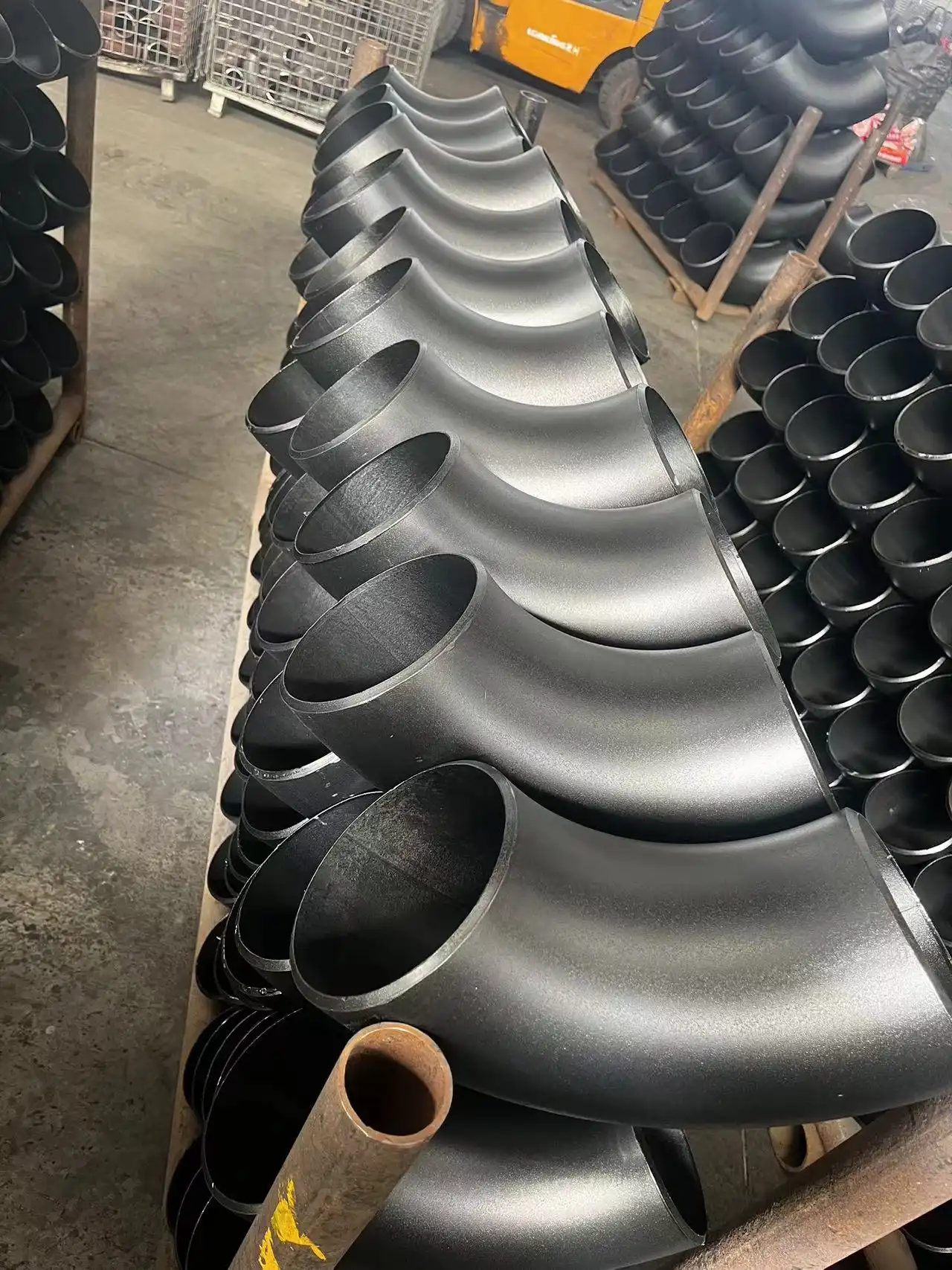
Material Selection Criteria for High-Temperature Steel Pipe Fittings
Alloy Steel Compositions and Temperature Capabilities
Alloy steel pipe fittings formulated with chromium, molybdenum, and vanadium additions demonstrate superior high-temperature performance compared to plain carbon steel through enhanced creep resistance and oxidation protection. Chromium content ranging from one to nine percent forms protective oxide layers, preventing surface degradation, while molybdenum additions between 0.5 to 1.0 percent strengthen the material matrix and improve thermal fatigue resistance. Common alloy grades, including ASTM A335 P11, P22, and P91, serve specific temperature ranges, with P11 suitable for services up to 600°C, P22 extending capabilities to 650°C, and advanced P91 materials operating reliably at temperatures approaching 650°C. These steel pipe fittings maintain mechanical properties, including tensile strength and yield strength, at temperatures where carbon steel experiences significant degradation. Engineers selecting alloy steel pipe fittings must consider not only maximum operating temperature but also thermal cycling patterns, as repeated heating and cooling cycles introduce additional stress factors affecting long-term performance. The higher initial price of superior alloy steel pipe fittings is worth it since they last longer and need less maintenance.
Stainless Steel Options for Extreme Conditions
Austenitic stainless steel pipe fittings manufactured from 304, 316, and high-temperature grades like 321 and 347 provide exceptional performance in applications combining elevated temperatures with corrosive environments or requiring oxidation resistance beyond alloy steel capabilities. The austenitic microstructure remains stable across wide temperature ranges, maintaining ductility and toughness that ferritic materials lose at temperature extremes. Grade 304 serves adequately for moderate temperature applications up to 550°C, while Grade 316 with molybdenum additions extends corrosion resistance for chemical processing. Stabilized grades 321 containing titanium and 347 with niobium additions prevent sensitization and intergranular corrosion in heat-affected zones of welded steel pipe fittings operating between 400°C and 850°C. The thermal expansion coefficient of austenitic stainless steel exceeds carbon and alloy steel by approximately forty percent, requiring design accommodation through expansion loops or flexible connections. These steel pipe fittings demonstrate excellent thermal shock resistance, tolerating rapid temperature changes that would crack more brittle materials, making them the only viable technical solution for critical applications combining high temperatures with corrosive conditions.
Carbon Steel for Moderate Temperature Service
Carbon steel pipe fittings manufactured to specifications, including ASTM A234 WPB, remain the economical choice for high-temperature applications with service temperatures below 450°C, where alloy additions provide minimal performance advantages. The material is very strong, easy to weld, and widely available in a wide range of fittings, such as elbows, tees, reducers, and caps. Because it doesn't change size much when it's hot, carbon steel is a good choice for pipe networks that carry hot water, steam, and industrial process lines. Manufacturing standards ensure consistent quality through controlled chemistry specifications limiting sulfur and phosphorus content that adversely affect high-temperature properties. The oxidation behavior of carbon steel at elevated temperatures requires consideration, as scale formation accelerates above 400°C in oxidizing atmospheres. These steel pipe fittings benefit from extensive industrial experience, providing reliable performance data supporting confident application within established temperature limitations, making them cost-effective solutions for moderate temperature services.
Design and Manufacturing Standards for High-Temperature Applications
Dimensional Specifications and Quality Requirements
High-temperature steel pipe fittings must maintain precise dimensional control to ensure proper fit-up during installation and accommodate thermal expansion without introducing excessive stress concentrations. International standards, including ASME B16.9 for wrought fittings, establish dimensional requirements covering center-to-end distances, outside diameters, wall thicknesses, and angular orientations, ensuring interchangeability across manufacturers. Tolerance specifications for high-temperature service often incorporate tighter controls than standard applications, recognizing that thermal cycling and elevated temperature exposure can affect dimensional stability. Wall thickness selection requires careful analysis, balancing pressure containment requirements and thermal stress accommodation, with schedule 80 and schedule 160 options providing enhanced strength margins. Steel pipe fittings for high-temperature service incorporate design features including reinforced configurations at branch connections where geometric discontinuities concentrate stresses. Manufacturing processes must achieve specified dimensions without introducing defects, including laminations or surface irregularities that become failure initiation sites under thermal cycling.
Heat Treatment and Testing Protocols
Heat treatment processes applied during manufacturing of high-temperature steel pipe fittings critically influence final material properties including grain structure, hardness, toughness, and residual stress states affecting service performance. Normalizing treatments refine grain structure and establish uniform properties throughout fitting cross-sections. Solution annealing for austenitic stainless steel pipe fittings dissolves carbides while stress relief treatments reduce residual stresses from forming operations. Quenching and tempering sequences for alloy steel grades develop optimal strength and toughness combinations suitable for high-temperature service. Post-weld heat treatment for field-fabricated assemblies relieves welding stresses and tempers heat-affected zones, preventing service failures from residual stress concentrations. Comprehensive quality control programs encompass material verification, dimensional inspection, non-destructive examination, and mechanical property testing ensuring components meet stringent specifications. Positive material identification confirms chemistry matches specified grades, while ultrasonic examination detects internal discontinuities and radiographic inspection reveals weld quality. Hydrostatic pressure testing subjects steel pipe fittings to proof pressures exceeding operating conditions, demonstrating pressure containment capability.
Installation and Welding Best Practices
Welding high-temperature steel pipe fittings demands qualified procedures, skilled welders, and appropriate techniques ensuring joints develop strength matching base materials throughout elevated temperature service. Welding technique parameters include critical factors such as filler metal choices, preheat temperatures, and post-weld heat treatment requirements according to material grades. Preheat requirements for alloy steel pipe fittings typically range from 150°C to 300°C depending on material grade, preventing hydrogen cracking and reducing thermal gradients during welding. Filler metal chemistry must complement base material composition while providing adequate high-temperature strength and creep resistance. Post-weld heat treatment following specified time-temperature cycles relieves residual stresses and tempers microstructures in both weld metal and heat-affected zones. Non-destructive examination of completed welds verifies internal soundness without service-limiting defects. The critical nature of welds in high-temperature systems demands rigorous control ensuring every joint achieves required properties for safe operation.
Application Guidelines and Maintenance Considerations
System Design and Support Requirements
If you want to make pipeline systems with high-temperature steel pipe fittings, you need to do a lot of study on things like how they will work over time, how much support they need, and how stress is distributed. Thermal expansion calculations determine movement accommodation requirements, with expansion loops or spring supports managing dimensional changes, preventing overstress. Support spacing follows recommendations considering elevated temperature strength reductions, with closer spacing required as operating temperatures increase. Stress analysis verifies that combined stresses from pressure, thermal expansion, and weight loads remain within allowable limits. Material selection considers not only steady-state operating temperatures but also startup and shutdown transients where rapid temperature changes introduce thermal shock. Steel pipe fittings experience stress concentrations at geometric transitions requiring attention during design analysis to ensure adequate fatigue margins. Insulation selection prevents external surface temperatures from creating personnel contact hazards while minimizing heat loss, improving energy efficiency.
Inspection and Maintenance Programs
Effective maintenance programs for high-temperature steel pipe fittings incorporate periodic inspections and condition monitoring techniques, identifying degradation before failures occur. Visual inspections assess external conditions, including coating integrity, insulation damage, and visible distortion indicating overstress. Non-destructive examination using ultrasonic thickness measurement tracks wall loss from corrosion, while advanced techniques detect crack development. Metallurgical replication samples surface material revealing microstructural changes, including creep cavitation or phase transformations, indicating approaching end-of-life conditions. Temperature monitoring using infrared imaging identifies abnormal thermal patterns indicating flow restrictions or insulation deficiencies. Steel pipe fittings in critical high-temperature service receive enhanced inspection attention due to potential failure consequences. Records of inspections that show what was found during maintenance give historical data that supports evaluations of remaining life and planning for replacements.
Economic and Performance Optimization
While comprehensive testing and premium materials represent significant upfront investment, economic benefits realized through failure prevention and maintenance optimization far exceed costs in high-temperature applications. A single unplanned shutdown triggered by steel pipe fitting failure can cost operators millions in lost production and emergency expenses. Life extension studies use thorough testing and checking methods that keep track of how well the system has worked in the past. These studies allow the system to keep working after its original design lifespans have passed as long as component condition reports show that it still has enough leftover capability. Long-term operational savings from reduced maintenance, extended component lives, and optimized replacement strategies accumulate throughout facility lifecycles, generating returns that compound over decades of operation.
Conclusion
How to get the best steel pipe fittings for high temperatures? You should know everything about the tools, rules, and projects used in the program so that it can grow. Alloy steel, stainless steel, and carbon steel options each offer distinct advantages suited to particular temperature ranges. At HEBEI RAYOUNG PIPELINE TECHNOLOGY CO., LTD., we supply high-quality steel pipe fittings, including buttweld elbows, reducers, and flanges manufactured with GOST-R and SGS certifications, ensuring your systems operate safely with materials that stand the test of time.
FAQ
1. What is the maximum temperature rating for carbon steel pipe fittings?
Carbon steel pipe fittings typically serve applications up to 450°C reliably, though some specifications permit service to 500°C with appropriate material grades. Beyond these temperatures, alloy steel pipe fittings become necessary to maintain adequate creep resistance and mechanical properties.
2. How does material selection affect high-temperature performance?
How well they withstand creep, how they react to rust, and how well they keep their mechanical qualities at high temperatures depend on the materials you choose. Alloy additions including chromium and molybdenum significantly enhance capabilities, while austenitic stainless steel pipe fittings provide superior performance in combined thermal and corrosive environments.
3. Are special welding procedures required for high-temperature fittings?
Yes, high-temperature steel pipe fittings require qualified welding procedures including controlled preheat, appropriate filler metals, and post-weld heat treatment ensuring weldments develop properties matching base materials throughout elevated temperature service while preventing cracking.
4. What inspection methods detect high-temperature degradation?
Inspection methods include ultrasonic thickness measurement tracking wall loss, advanced ultrasonic techniques detecting cracks, metallurgical replication revealing microstructural changes, and temperature monitoring identifying abnormal patterns enabling proactive maintenance of steel pipe fittings.
HEBEI RAYOUNG PIPELINE: Leading Steel Pipe Fittings Manufacturers for High-Temperature Excellence
At HEBEI RAYOUNG PIPELINE TECHNOLOGY CO., LTD., we recognize that high-temperature applications demand uncompromising material quality and manufacturing precision. As one of the best companies that makes pipes and fittings, we offer a large range of goods, such as steel pipe fittings that are made to work well in many different fields. Our commitment to consistent quality backed by ISO 9001:2015 certification ensures every component meets rigorous international standards. We supply buttweld elbows, reducers, flanges, and comprehensive fitting solutions manufactured from premium carbon steel and alloy grades. With GOST-R and SGS certifications validating our export compliance, we serve global markets with dependable materials supporting critical infrastructure. Trust HEBEI RAYOUNG PIPELINE TECHNOLOGY CO., LTD. as your partner delivering innovation and reliability for demanding applications. Contact us today at info@hb-steel.com to discuss how our steel pipe fittings solutions can enhance your high-temperature piping systems.
References
1. Davis, J. R. (ed.) (2020). ASM Specialty Handbook: Heat-Resistant Materials. ASM International, Materials Park, Ohio.
2. American Society of Mechanical Engineers (2021). ASME B31.3: Process Piping - Design Requirements for High-Temperature Service. ASME International, New York.
3. Boyer, H. E. (2019). Atlas of Creep and Stress-Rupture Curves for High-Temperature Alloys. ASM International, Materials Park, Ohio.
4. Viswanathan, R. (2022). Damage Mechanisms and Life Assessment of High-Temperature Components. ASM International, Materials Park, Ohio.
5. American Petroleum Institute (2021). API 530: Calculation of Heater-Tube Thickness in Petroleum Refineries. API Publishing Services, Washington, DC.
6. Cerjak, H. and Mayr, P. (2020). Creep Strength of Welded Joints of High-Temperature Steels. Institute of Materials Science and Welding, Graz University of Technology, Austria.

Need a quote? Want to see samples? Just say hello. We’re friendly. We’re fast. And we’re ready when you are.
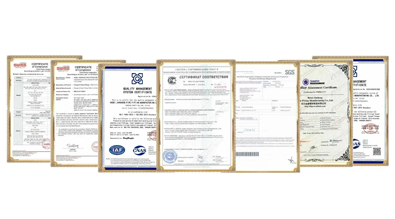
Welcome to RAYOUNG – Strong Pipes, Stronger Promise
